#pakistan 1961
Text
On 11 February 1961, the Queen and Prince Philip attended a dinner given by the Commander-in-Chief of the Pakistan Army.
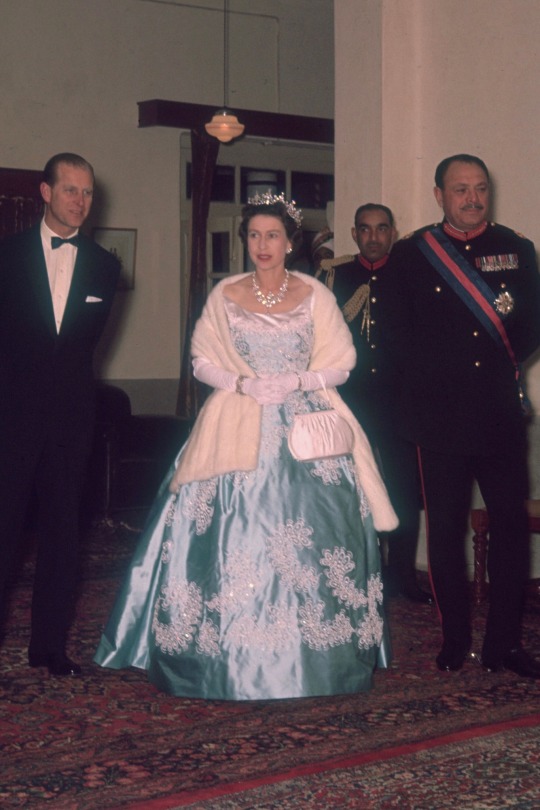
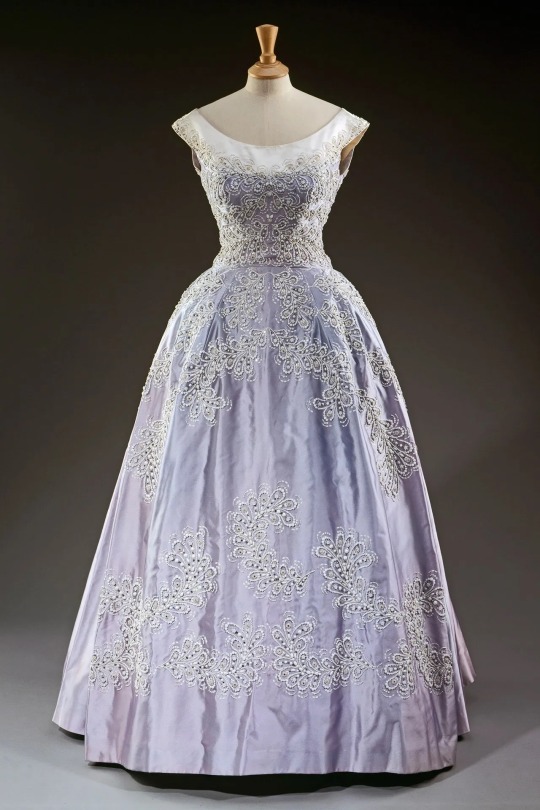
The Queen wore a crinoline gown of pale blue silk faille, embroidered all over with white beads in a feather motif, designed by Norman Hartnell for this occasion.
As for the jewelry, she wore the Girls of Great Britain and Ireland tiara, Queen Victoria’s Golden Jubilee necklace, the Edinburgh wedding bracelet, and her Jaeger-LeCoultre Calibre 101 watch.
40 notes
·
View notes
Text
Visit my new e store on shopify!
https://479b60-5.myshopify.com/

View On WordPress
0 notes
Text
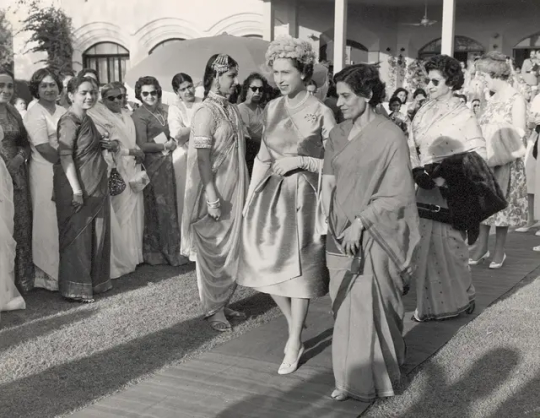
HM Queen Elizabeth II. Pakistan, February 1961.
39 notes
·
View notes
Photo
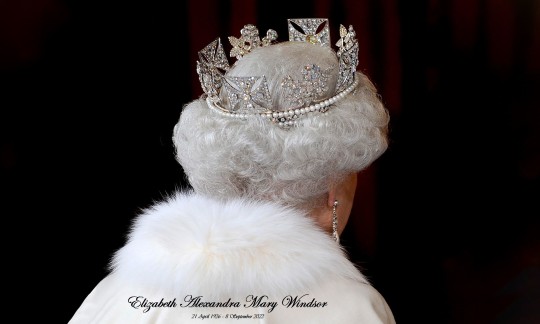
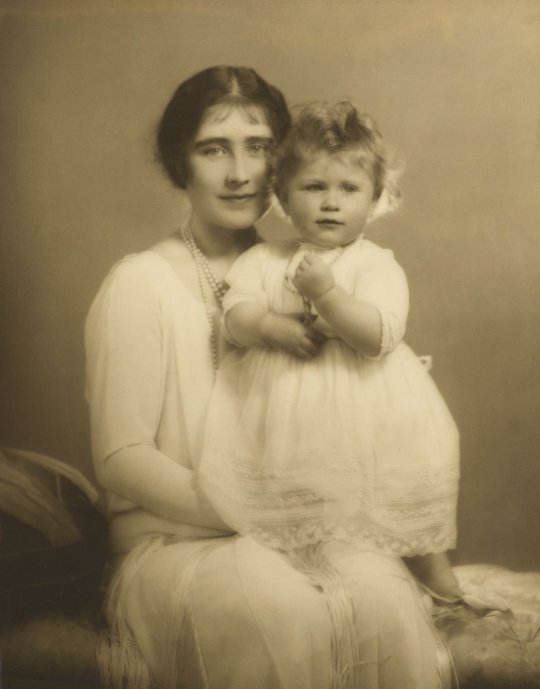


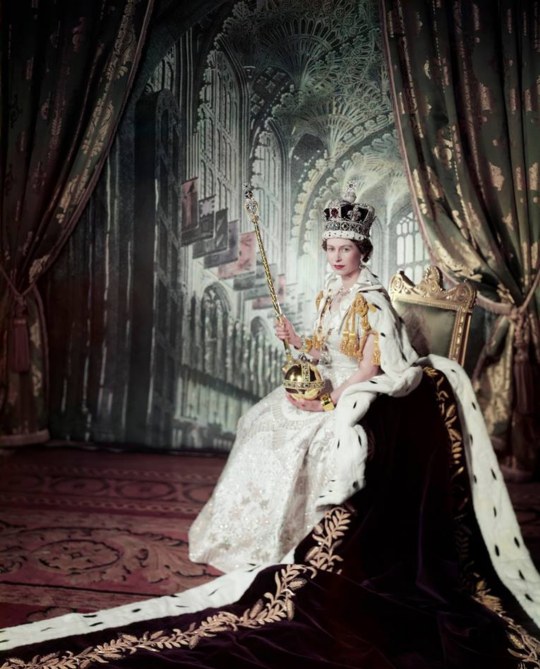
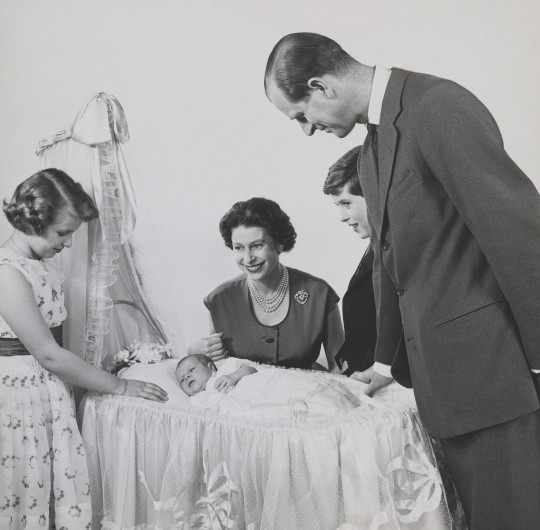


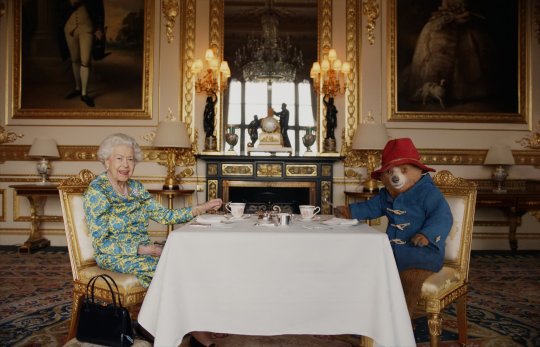

Queen Elizabeth II has died
Queen Elizabeth II, the United Kingdom’ s longest-serving monarch, has died at Balmoral aged 96, after reigning for 70 years.
Elizabeth II (Elizabeth Alexandra Mary; 21 April 1926 – 8 September 2022) was Queen of the United Kingdom and 14 other Commonwealth realms from 6 February 1952 until her death on 8 September 2022.
Her reign of 70 years and 214 days was the longest of any British monarch and the second longest recorded of any monarch of a sovereign country.
Elizabeth was born in Mayfair, London, as the first child of the Duke and Duchess of York (later King George VI and Queen Elizabeth). Her father acceded to the throne in 1936 upon the abdication of his brother, King Edward VIII, making Elizabeth the heir presumptive.
She was educated privately at home and began to undertake public duties during the Second World War, serving in the Auxiliary Territorial Service. In November 1947, she married Philip Mountbatten, a former prince of Greece and Denmark, and their marriage lasted 73 years until his death in April 2021. They had four children together: Charles III; Anne, Princess Royal; Prince Andrew, Duke of York; and Prince Edward, Earl of Wessex.
When her father died in February 1952, Elizabeth—then 25 years old—became queen regnant of seven independent Commonwealth countries: the United Kingdom, Canada, Australia, New Zealand, South Africa, Pakistan, and Ceylon (known today as Sri Lanka), as well as Head of the Commonwealth. Elizabeth reigned as a constitutional monarch through major political changes such as the Troubles in Northern Ireland, devolution in the United Kingdom, the decolonization of Africa, and the United Kingdom's accession to the European Communities and withdrawal from the European Union.
The number of her realms varied over time as territories have gained independence and some realms have become republics. Her many historic visits and meetings include state visits to China in 1986, Russia in 1994, the Republic of Ireland in 2011, and visits to or from five popes.
Significant events include Elizabeth's coronation in 1953 and the celebrations of her Silver, Golden, Diamond, and Platinum Jubilees in 1977, 2002, 2012, and 2022, respectively.
Elizabeth was the longest-lived and longest-reigning British monarch, the oldest and longest-serving incumbent head of state, and the second-longest verifiable reigning sovereign monarch in world history, only behind Louis XIV of France.
She faced occasional republican sentiment and media criticism of her family, particularly after the breakdowns of her children's marriages, her annus horribilis in 1992, and the death of her former daughter-in-law Diana, Princess of Wales, in 1997.
However, support for the monarchy in the United Kingdom remained consistently high, as did her personal popularity. Elizabeth died on 8 September 2022 at Balmoral Castle, Aberdeenshire.
“The Queen is dead, Long live King Charles III”
The Duchess of York with Princess Elizabeth, 30 June 1927 by Marcus Adams (The Royal Collection Trust),
Princess Elizabeth in uniform (1942) by Cecil Beaton (The Royal Collection Trust),
Princess Elizabeth and The Duke of Edinburgh on their wedding day, 20th November 1947 by Sterling Henry Nahum ‘Baron’ (The Royal Collection Trust),
Queen Elizabeth II poses on her Coronation Day on June 2, 1953, in London (Photography by Cecil Beaton),
Queen Elizabeth II with Prince Philip, Duke of Edinburgh and family - 16 Mar 1960 by Cecil Beaton (From the Collection of Queen Elizabeth The Queen Mother),
Queen Elizabeth II and her son, the Prince of Wales, out riding at Windsor Castle I May 18, 1961 (PA),
The Royal coat of arms of the United Kingdom used outside of Scotland,
Queen Elizabeth II Platinum Jubilee 2022 - Platinum Party At The Palace. The Queen Elizabeth II and Paddington Bear having cream tea at Buckingham Palace (BBC Platinum Party at the Palace),
Portrait of Queen Elizabeth II released by The Royal Windsor Horse Show on April 20, 2022 to mark the occasion of her 96th birthday.
#rip#queen elizabeth ii#elizabeth II#queen elizabeth#monarchy#united kingdom#royal#platinium junilee#windsor#markus adams#cecil beaton#theroyalcollectiontrust#paddington#bbc#balmoral#diana#king charles III#princess anne#prince andrew#prince edward#liveunique#history#britsh history#british royality
345 notes
·
View notes
Text


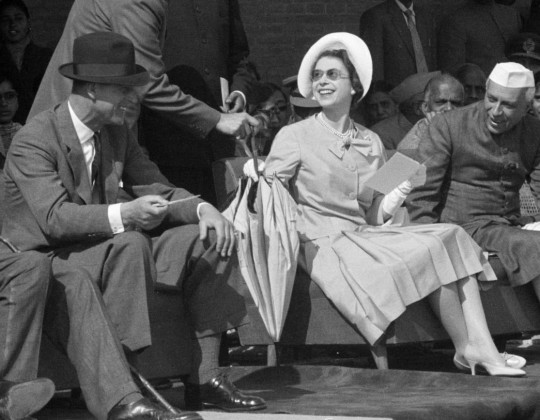

Queen Elizabeth II and Prince Philip pictured during their tour of India and Pakistan, 1961
#photo sequence#liz spam#queen elizabeth ii#prince philip#duke of edinburgh#philibet#they looked so good
127 notes
·
View notes
Photo

Pakistan ravaged by climate change
The accumulation of increasingly violent phenomena threatens the population, already weakened by the government's lack of management and prevention.
by @Victor_Simonnet
Unprecedented heat waves from March to June
During this period, both Pakistan and northwestern India record temperatures of 6°C to 9°C above seasonal norms, according to the Pakistan Meteorological Service.
Jhelum, 47°C on April 14
Jacobabad, 51°C on May 14
Nawabshah, 50.5°C on May 14
In 2022 the monsoon started in June, earlier than expected. July 2022 was the wettest month in over sixty years (1961).
The Indus River, the backbone of the country, is both a communication route and a source of drinking and irrigation water for agriculture. Pakistan depends on this strategic river, already weakened by the developments carried out by India upstream.
The province of Balochistan, usually spared by the monsoon, has recorded rainfall five times higher than average since July.
The province of Sind provides a quarter of the country's agricultural production. The spring drought caused the wheat harvest to drop by 20%. More than 1 million hectares of crops were flooded.
With more than 200 million inhabitants and a population growth rate of 2.4% per year, urbanization is accelerating. Towns sometimes develop in flood-prone areas, rivers are modified and their approaches are concreted. The artificialization of the soil reinforces the phenomenon of runoff.
Pakistan is particularly vulnerable to flooding. In 2010 these had caused the death of 2,000 people and caused damage close to 40 billion dollars. Since then, these violent phenomena have become more frequent.
As temperatures rise, glaciers are melting and feeding the flow of rivers. High altitude glacial lakes fracture and suddenly release huge amounts of water. Thirty lakes threaten more than 7 million people.
The cold equivalent of the El Nino phenomenon causes a cooling of part of the surface waters of the Pacific, influencing the cycle of precipitation and the climate of certain regions of the globe. While its usual duration is two years, La Nina conditions persist for the third year in a row.
Le Monde, September 3, 2022
67 notes
·
View notes
Text
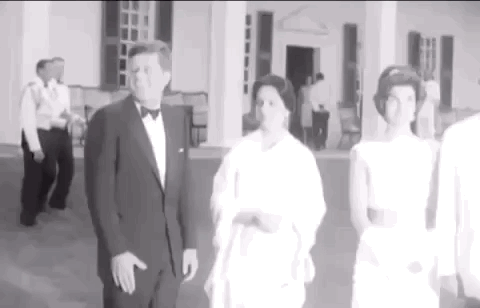
The Kennedy’s host a state dinner at Mount Vernon in honor of President Mohammad Ayub Khan of Pakistan and his daughter, Begum Nasir Akhtar Aurangzeb on July 11th, 1961
#jackie kennedy#john f kennedy#the kennedys#vintage#icons#1960s#jackie o#60s#jfk#60s icons#first lady#60s 70s 80s 90s#60s culture#60s style#jackie onassis#60s hair#jacqueline kennedy#fashion icon#1960s aesthetic#1960s icons#60s couples#vintage celebrities#vintage beauty#american vintage#iconic couple#gif#vintage gif#vintage glamour#aesthetic
57 notes
·
View notes
Text
On this day in 1961
Commonwealth Prime Ministers
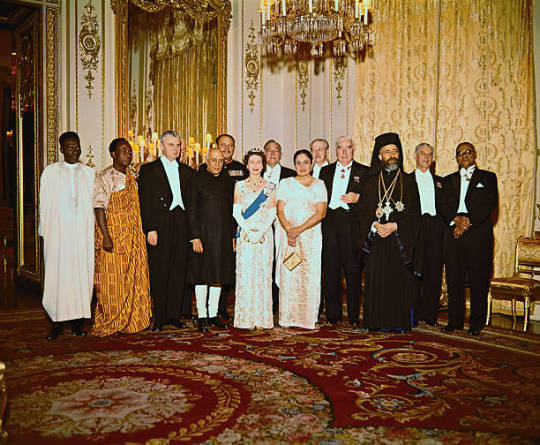
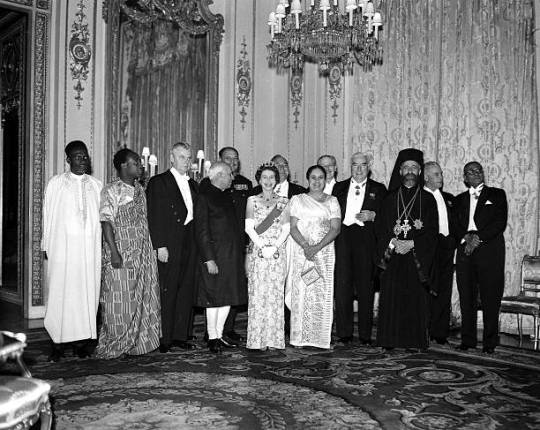
16th March 1961. Queen Elizabeth II poses with Commonwealth ministers at Buckingham Palace here March 16th where all attended a dinner shown in the photo are: (left to right) President Kwame Nkrumah of Ghana, Prime Minister John G. Diefenbaker of Canada, Prime Minister Hendrik Verwoerd (rear) of South Africa, Prime Minister Jawaharial Nehru of India, President Mohammed Ayud Khan of Pakistan (rear), Queen Elizabeth II, Prime Minister Roy Welensky (rear) of Rhodesia, Prime Minister Sirimava Bandaranaika of Ceylon, Prime Minister Harold Macmillan (rear) of Britain, Australian Prime Minister Robert Menzies, Archbishop Makarios, President of Cyprus, and Prime Minister Keith Holyoake of New Zealand.
17 notes
·
View notes
Text
Events 2.27 (after 1940)
1940 – Martin Kamen and Sam Ruben discover carbon-14.
1942 – World War II: During the Battle of the Java Sea, an Allied strike force is defeated by a Japanese task force in the Java Sea in the Dutch East Indies.
1943 – The Smith Mine #3 in Bearcreek, Montana, explodes, killing 74 men.
1943 – The Holocaust: In Berlin, the Gestapo arrest 1,800 Jewish men with German wives, leading to the Rosenstrasse protest.
1951 – The Twenty-second Amendment to the United States Constitution, limiting Presidents to two terms, is ratified.
1961 – The first congress of the Spanish Trade Union Organisation is inaugurated.
1962 – Vietnam War: Two dissident Republic of Vietnam Air Force pilots bomb the Independence Palace in Saigon in a failed attempt to assassinate South Vietnam President Ngô Đình Diệm.
1963 – The Dominican Republic receives its first democratically elected president, Juan Bosch, since the end of the dictatorship led by Rafael Trujillo.
1964 – The Government of Italy asks for help to keep the Leaning Tower of Pisa from toppling over.
1971 – Doctors in the first Dutch abortion clinic (the Mildredhuis in Arnhem) start performing artificially-induced abortions.
1973 – The American Indian Movement occupies Wounded Knee in protest of the federal government.
1976 – The former Spanish territory of Western Sahara, under the auspices of the Polisario Front declares independence as the Sahrawi Arab Democratic Republic.
1988 – Sumgait pogrom: The Armenian community in Sumgait, Azerbaijan is targeted in a violent pogrom.
1991 – Gulf War: U.S. President George H. W. Bush announces that "Kuwait is liberated".
2001 – Loganair Flight 670A crashes while attempting to make a water landing in the Firth of Forth in Scotland.
2002 – Ryanair Flight 296 catches fire at London Stansted Airport causing minor injuries.
2002 – Godhra train burning: A Muslim mob torches a train returning from Ayodhya, killing 59 Hindu pilgrims.
2004 – A bombing of a SuperFerry by Abu Sayyaf in the Philippines' worst terrorist attack kills more than 100 passengers.
2004 – Shoko Asahara, the leader of the Japanese doomsday cult Aum Shinrikyo, is sentenced to death for masterminding the 1995 Tokyo subway sarin attack.
2007 – Chinese stock bubble of 2007: The Shanghai Stock Exchange falls 9%, the largest daily fall in ten years, following speculation about a crackdown on illegal share offerings and trading, and fears about accelerating inflation.
2008 – Jemaah Islamiyah terrorist Mas Selamat Kastari escapes from a detention center in Singapore, hiding in Johor, Malaysia until he was recaptured over a year later.
2010 – An earthquake measuring 8.8 on the moment magnitude scale strikes central parts of Chile leaving over 500 victims, and thousands injured. The quake triggers a tsunami which strikes Hawaii shortly after.
2013 – A shooting takes place at a factory in Menznau, Switzerland, in which five people (including the perpetrator) are killed and five others injured.
2015 – Russian politician Boris Nemtsov is assassinated in Moscow while out walking with his girlfriend.
2019 – Pakistan Air Force JF-17 Thunder downs Indian pilot Abhinandan Varthaman's Mig-21 in an aerial dogfight and captures him after conducting airstrikes in Jammu and Kashmir.
1 note
·
View note
Text
On 10 February 1961, the Queen and Prince Philip attended a dinner given by the Governor of Lahore during their tour of Pakistan.


The Queen wore a yellow duchesse satin gown designed by Hardy Amies for this occasion. It was embroidered with flowers at the bottom of the skirt and had a detachable train at the back.
As for the jewelry, she wore the Girls of Great Britain and Ireland tiara, the Greville chandelier earrings, the diamond festoon necklace, and the Edinburgh wedding bracelet.
55 notes
·
View notes
Text
Elenco degli Stati bombardati dagli USA dopo la Seconda Guerra Mondiale:
- Corea e Cina 1950-53 (Guerra in Corea)
- Guatemala (1954)
- Indonesia (1958)
- Cuba (1959-1961)
- Guatemala (1960)
- Congo (1964)
- Laos (1964-1973)
- Vietnam (1961-1973)
- Cambogia (1969-1970)
- Guatemala (1967-1969)
- Grenada (1983)
- Libano, Siria (1983, 1984)
- Libia (1986)
- El Salvador (1980)
- Nicaragua (1980)
- Iran (1987)
- Panama (1989)
- Iraq (1991) (Guerra del Golfo)
- Kuwait (1991)
- Somalia (1993)
- Bosnia (1994, 1995)
- Sudan (1998)
- Afghanistan (1998)
- Jugoslavia (1999)
- Yemen (2002)
- Iraq (1991-2003) (truppe USA e UK insieme)
- Iraq (2003-2015)
- Afghanistan (2001-2015)
- Pakistan (2007-2015)
- Somalia (2007-2008, 2011)
- Yemen (2009, 2011)
- Libia (2011, 2015)
- Siria (2014-2015)
... ma loro sono i buoni!
La Cina ha invitato a "non dimenticare mai chi è la vera minaccia alla pace".
E che siano loro a dirlo...
8 notes
·
View notes
Text
Elenco degli Stati bombardati dai nostri amici americani dopo la Seconda Guerra Mondiale:
- Corea e Cina 1950-53 (Guerra in Corea)
- Guatemala (1954)
- Indonesia (1958)
- Cuba (1959-1961)
- Guatemala (1960)
- Congo (1964)
- Laos (1964-1973)
- Vietnam (1961-1973)
- Cambogia (1969-1970)
- Guatemala (1967-1969)
- Grenada (1983)
- Libano, Siria (1983, 1984)
- Libia (1986)
- El Salvador (1980)
- Nicaragua (1980)
- Iran (1987)
- Panama (1989)
- Iraq (1991) (Guerra del Golfo)
- Kuwait (1991)
- Somalia (1993)
- Bosnia (1994, 1995)
- Sudan (1998)
- Afghanistan (1998)
- Jugoslavia (1999)
- Yemen (2002)
- Iraq (1991-2003) (truppe Usa e UK)
- Iraq (2003-2015)
- Afghanistan (2001-2015)
- Pakistan (2007-2015)
- Somalia (2007-2008, 2011)
- Yemen (2009, 2011)
- Libia (2011, 2015)
- Siria (2014-2015)
Ho dimenticato qualcosa???
8 notes
·
View notes
Text
decided to read up on the 1961 Single Convention on Narcotic Drugs. the countries that stood in opposition included India and Pakistan, Turkey, Burma, Indonesia (which at the time produced coca. did not know about that) and various countries in the Andes and Central America. most of Africa wanted to just leave laws to individual states with no supranational control.
2 notes
·
View notes
Quote
In the 1961 census, Christians from the choorra caste were categorised as Isai. Isai is taken from Isa, an Arabic equivalent of Jesus. Their profession was officially written as sweepers in the 1961 census. Over time, the word Isai got stigmatised because of its association with their ancestral caste-based cleaning occupation. Therefore, as observed by researcher Asif Aqeel and journalist Sama Faruqi, Punjabi Christians became involved in an ongoing social movement to call themselves Maseehi, not Isai. The community representatives even went to the Supreme Court of Pakistan to request that the Christian community be referred to as Maseehi instead of Isai. A court order was passed in their favour.
Ayra Indrias Patras, ‘Once a sweeper…?’, Dawn
#Dawn#Ayra Indrias Patras#Pakistan#Christians#choorras#Isai#Sama Faruqi#Punjabi Christians#Maseehi#Supreme Court of Pakistan
4 notes
·
View notes
Text

1961, Royal Tour to Pakistan, Queen Elizabeth II is pictured at a Lahore banquet
92 notes
·
View notes
Text
India was celebrating 50 years of independence and on the Queen’s itinerary was a visit to Jallianwala Bagh, the site in the city of Amritsar where in 1919 a British general ordered thousands of peaceful protesters to be shot, a massacre that was one of the bloodiest episodes of British colonial rule over India. The hope among many was that the Queen’s visit would finally bring about a long-awaited apology for colonial atrocities. But in the end, the apology never came.
“It is no secret that there have been some difficult episodes in our past,” said the Queen in her address the night before her visit. “Jallianwala Bagh, which I shall visit tomorrow, is a distressing example. But history cannot be rewritten, however much we might sometimes wish otherwise.”
When Queen Elizabeth was born in 1926, her grandfather was still the Emperor of India, which was under British rule for 200 years, but by the time she ascended to the throne in 1952, India had been independent for five years. At her wedding to Philip Mountbatten in 1947, the Queen was given a handkerchief by India’s best known freedom campaigner, Mahatma Gandhi, and it was said to remain one of her most treasured possessions.
The somewhat muted response to the Queen’s death in India reflects her complex position in a nation where the British monarchy is still seen as a lasting symbol of colonial rule that pillaged its lands for 200 years. India’s last viceroy before independence was the Queen’s distant cousin Lord Louis Mountbatten – also Prince Philip’s uncle – who oversaw the bloody partitioning of the country into the separate nations of India and Pakistan.
India remains the largest country in the Commonwealth, which is largely made up of former British territories and is still formally headed by the British monarch. After news of the Queen’s death broke, a national day of mourning was declared and all flags were lowered to half-mast.
“Her Majesty Queen Elizabeth II will be remembered as a stalwart of our times,” tweeted India’s prime minister, Narendra Modi. “She provided inspiring leadership to her nation and people. She personified dignity and decency in public life. Pained by her demise.”
But though multiple Bollywood stars sent effusive condolences over the Queen’s death on social media, there was otherwise little public outpouring of grief.
Jyoti Atwal, a professor of history at Jawaharlal Nehru University in Delhi, said that in India, the institution of the monarchy was still lambasted as a symbol of British rule. Hours before the death of the Queen was announced, Modi oversaw the renaming of Rajpath, a central avenue in Delhi that during the colonial period had been named in honour of King George V, Queen Elizabeth’s grandfather. Modi said Rajpath was a “symbol of slavery”, which would now be erased.
However, Atwal said that on a personal level, the Queen’s visits to India, particularly her first in 1961, had earned her much affection and admiration – many people can still recall watching her riding through the streets of Delhi in her royal coach buggy.
“The Queen represented the oppression of British rule and colonialism, but she was also viewed separately as a person, not just as a monarch, and people in India were very charmed by her visits, by that buggy culture,” said Atwal. “My mother still remembers the Queen’s visit in 1961; she was a child sitting in the front row when the Queen was travelling in the buggy. So it captured the public imagination even though it was clearly a remnant of the British Raj.”
Nonetheless, Atwal said, as the furore around the Queen’s visit to Jallianwala Bagh had demonstrated, in India there was a lasting expectation that the British monarchy should apologise for the injustices of colonial rule, which some view as an essential part of the process of decolonisation.
“There are large sections in India who still wanted an apology from the Queen and who still think there hasn’t been closure for the oppression of the Raj,” said Atwal. “The burden of giving that apology falls on the monarchy, not the prime minister or another member of the British government. So now that Charles is King, people in India will be expecting the apology from him.”
Since the the Queen’s death, there have also been calls for the return of the Koh-I-Noor diamond, one of the largest cut diamonds in the world, which sits in the crown of the Queen Mother and is on display at the Tower of London. The diamond, which was mined in India, has been the source of a decades-long dispute between India and the UK, with India saying it was taken illegally.
Over the weekend, the Indian MP and author Shashi Tharoor called its display in London a “powerful reminder of the injustices perpetrated by the former imperial power”. It is thought the crown bearing the Koh-i-Noor diamond will now be worn by King Charles’s wife, Camilla, the Queen Consort.
“Until it is returned at least as a symbolic gesture of expiation it will remain evidence of the loot, plunder and misappropriation that colonialism was really all about,” said Tharoor
5 notes
·
View notes